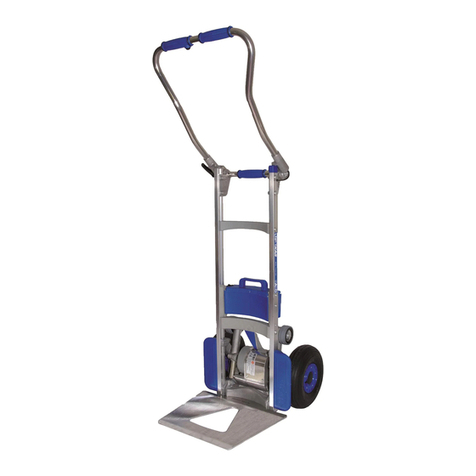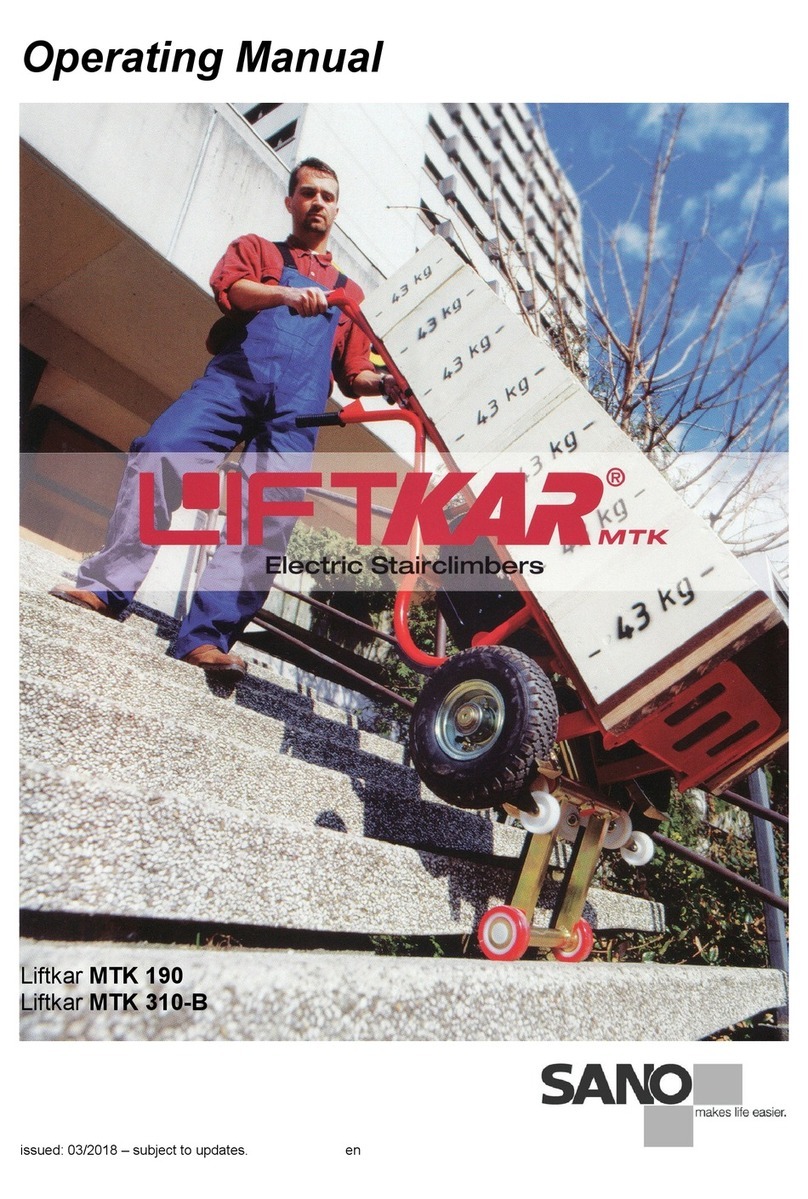7/52
▪Make sure that nobody is below the Liftkar PT while in operation on stairs.
▪A safety belt must always been used when transporting people with Liftkar
stairclimbers.
▪The safety belt must always be in the closed position regardless of whether a
person is being transported or not. Never allow the safety belt to hang over
the side to the left or right. Risk of jamming the wheels –danger of falling. Risk
of damaging the stairclimber.
▪For transporting people using Liftkar stairclimbers, only use wheelchairs fitted
with a safety belt or other personal retention system.
▪Make sure you always wear closed, non-slip shoes when operating the
Liftkar PT.
▪Do not use the Liftkar PT with a passenger until trained by a certified
Liftkar PT trainer and have taken ample time to perfect the use of the
product on your own. Once trained begin practicing without a payload. Next,
try operating it again with somebody as lightweight as possible who is not
disabled. The test passenger should hold onto a handrail or a second person
during the climb.
▪Always start by using the lowest speed first (setting 1). Do not switch from
single step mode to continuous mode.
▪Never reach into the transport mechanism with your hands while the battery
pack is connected. (Risk of injury may result).
▪When transporting the Liftkar PT itself, Sano recommends undoing the lever
screw (stays on handle, so there is no risk of losing it) and taking the
stairclimber apart. This will prevent it from being switched on inadvertently and
in this form the Liftkar PT is easier to transport.
▪The Liftkar PT is supplied with a powerful, replaceable 5 Ah / 24 Volt battery
pack, which should always be fully charged before using the stairclimber. If, for
whatever reason, the battery pack should run out of power while in operation on
stairs, move the stairclimber down the stairs and replace or recharge the
battery. It is always possible to move down at least one flight of stairs,
even with an empty battery pack. The first sign of the battery pack running
out is indicated by the stairclimber's performance. The Liftkar PT becomes
slower and appears to be struggling. Inexperienced operators are warned by
the LED display: if the battery pack needs to be recharged the LED display
starts flashing, alternating between red and green and an intermittent acoustic
warning signal.
▪Do not use the stairclimber if unusual noises and/or vibrations occur while the
Liftkar stairclimber is in operation. Withdraw the stairclimber from use and have
it inspected by an authorized technician.
▪Please observe the following instructions regarding storing and operating your
Liftkar stairclimber:
Avoid exposing the stairclimber to high temperatures such as direct sunlight and
high humidity, e.g. due to use in saunas, in the rain etc, because there is a risk
of overheating, burning and damaging the stairclimber. Avoid exposing the
stairclimber to very low temperatures below 5°C/41F.





























